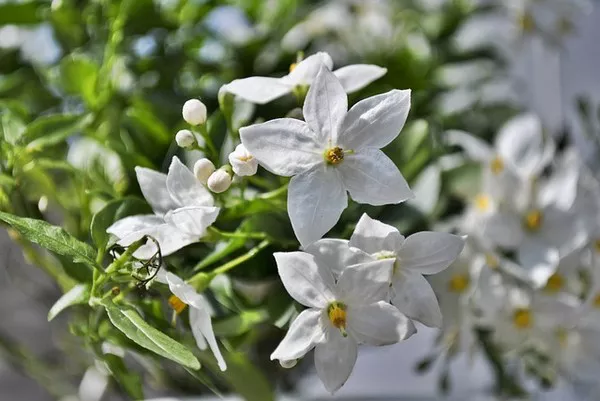Flowers are not just aesthetically pleasing, they are also symbols of beauty, love, and life itself. They captivate our senses with their vibrant colors, intricate patterns, and delightful fragrances. However, beneath their delicate appearance lies a complex and fascinating process of growth that involves biology, chemistry, and environmental factors. In this article, we will explore the journey of how flowers grow, from the initial germination of a seed to the blossoming of a beautiful bloom.
The Seed: The Beginning of Life
The life of a flower begins with a tiny, unassuming seed. Seeds are remarkable packages of life waiting for the right conditions to unleash their potential. Each seed contains a tiny plant embryo, encased in a protective shell, along with a store of nutrients to sustain the young plant as it grows. When the seed is planted in soil, and the environmental conditions are favorable, the process of germination begins.
Germination: The First Sign of Life
Germination is the moment when the seed breaks out of its dormancy and starts to grow. This process is initiated by water, which softens the seed coat and triggers biochemical changes within the seed. The first visible sign of germination is the emergence of a small root, known as the radicle, followed by a shoot that will eventually grow into the stem and leaves of the plant.
The Role of Light and Temperature
Light and temperature play crucial roles in the growth of flowers. Many seeds require specific temperature ranges to germinate, and some even rely on exposure to light to trigger the process. This phenomenon, known as photoperiodism, is essential for the synchronization of flowering with the changing seasons.
During the initial stages of growth, the young plant relies on stored energy from the seed. As the shoot reaches for the sunlight, it starts to produce its energy through photosynthesis, the process by which plants convert sunlight, carbon dioxide, and water into sugars and oxygen. This is the foundation of a plant’s growth and development.
The Growth of Roots
While the shoot reaches for the sky, the root system is simultaneously developing underground. Roots serve several vital functions for the plant. They anchor the plant securely in the soil, provide stability against wind and other forces, and absorb water and essential nutrients from the surrounding environment. The growth of roots is a critical aspect of flower development, as a healthy root system ensures the plant’s overall well-being.
Stem and Leaf Development
As the plant continues to grow, the stem elongates, and leaves begin to form. The stem acts as a support structure for the plant, allowing it to elevate its leaves above competing vegetation and reach for sunlight. Leaves, on the other hand, are the primary sites for photosynthesis. Through tiny structures called chloroplasts, they harness sunlight to produce the sugars that fuel the plant’s growth.
The Flower Bud: Nature’s Promise
The journey of flower growth culminates in the formation of the flower bud. Inside the bud, a tightly packed arrangement of modified leaves called sepals, petals, stamens, and pistils awaits its moment to unfurl and reveal the beauty within. The timing of this process is regulated by intricate genetic and environmental cues.
The Role of Hormones
Plant hormones, such as auxins and gibberellins, play a vital role in flower development. They control the elongation of stems, the formation of leaves, and the initiation of flower buds. The balance of these hormones is finely tuned to ensure that the plant grows and flowers at the right time and in response to the surrounding conditions.
Pollination: The Essential Step
For many flowers, the journey of growth is not complete without the crucial step of pollination. Pollination is the transfer of pollen from the male reproductive parts (stamens) to the female reproductive parts (pistils) of a flower. This process can occur through various mechanisms, including wind, water, and animal pollinators such as bees, butterflies, and birds.
The fertilization of the ovules within the pistil leads to the formation of seeds. These seeds contain genetic information from both parent plants and represent the next generation of flowers, continuing the cycle of life.
Environmental Influences on Flowering
The timing of flowering is not solely determined by genetics and hormones; it is also influenced by external factors. Temperature, day length, and light intensity can all play a role in when a flower blooms. This is why you may see certain flowers only during specific seasons.
Furthermore, some plants are adapted to respond to environmental stressors. For example, when faced with drought conditions, some plants may delay flowering until more favorable conditions return. This is a survival strategy that ensures the plant can reproduce when conditions are conducive to the survival of the offspring.
Conclusion
The growth of flowers is a captivating journey that begins with a humble seed and culminates in the vibrant blossoms that grace our gardens, landscapes, and natural environments. This journey involves a symphony of biological processes, environmental cues, and the artistry of nature itself. Flowers not only enrich our lives with their beauty but also serve essential ecological roles as pollinators and contributors to the diversity of life on Earth.
As we witness the growth of flowers, we are reminded of the intricate web of life and the delicate balance that sustains our planet. From the germination of a seed to the unfurling of petals, the journey of flower growth is a testament to the wonders of nature, offering a glimpse into the mysteries of life itself.


